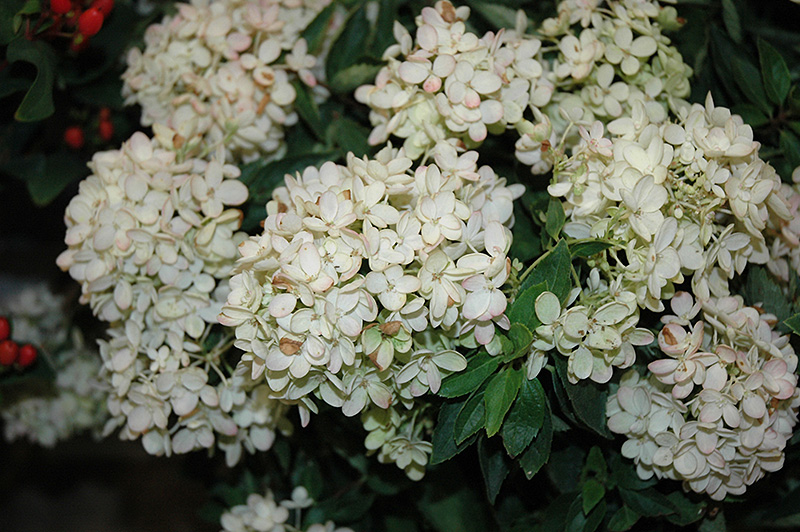The Plant Finder
Have a specific vision in mind for your outdoor space?
Search our database and find the perfect plants to meet your gardening needs.
Sugar Puff Hydrangea
Hydrangea paniculata 'Sugar Puff'
Height: 3 feet
Spread: 4 feet
Sunlight:
![]()
![]()
![]()
Hardiness Zone: 3a
Description:
A showy petite variety with a well branched, mounded habit and an abundance of small, white panicles from summer until fall; little or no pruning required to maintain shape; needs slightly acidic well-drained soil
Ornamental Features
Sugar Puff Hydrangea features bold conical white flowers with shell pink overtones at the ends of the branches from early summer to late fall. The flowers are excellent for cutting. It has green deciduous foliage. The pointy leaves do not develop any appreciable fall colour.
Landscape Attributes
Sugar Puff Hydrangea is a multi-stemmed deciduous shrub with an upright spreading habit of growth. Its relatively coarse texture can be used to stand it apart from other landscape plants with finer foliage.
This shrub will require occasional maintenance and upkeep, and is best pruned in late winter once the threat of extreme cold has passed. It has no significant negative characteristics.
Sugar Puff Hydrangea is recommended for the following landscape applications;
- Accent
- Mass Planting
- General Garden Use
Planting & Growing
Sugar Puff Hydrangea will grow to be about 3 feet tall at maturity, with a spread of 4 feet. It has a low canopy. It grows at a medium rate, and under ideal conditions can be expected to live for 40 years or more.
This shrub performs well in both full sun and full shade. It prefers to grow in average to moist conditions, and shouldn't be allowed to dry out. It is not particular as to soil type or pH. It is highly tolerant of urban pollution and will even thrive in inner city environments. Consider applying a thick mulch around the root zone in winter to protect it in exposed locations or colder microclimates. This is a selected variety of a species not originally from North America.

